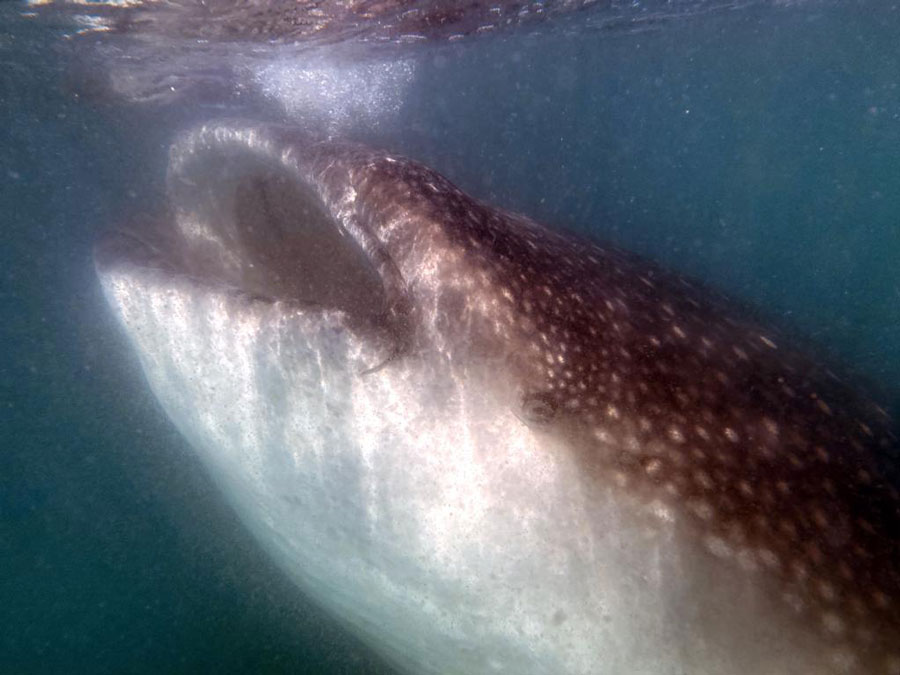See why La Paz is one of my favorite vanlife spots in Baja California and experience the beautiful scuba diving on wrecks and coral reefs in the Espiritu Santo National Park.
Vanlife in La Paz
I really love La Paz. It’s the perfect combination of cute, beachside town and bustling, eventful city where you can get anything you need. Some of my favorite camping beaches are out here. One thing to watch out for… I have experienced and heard of more petty theft in the La Paz area than any other town in Los Cabos. This is simply the nature of bigger cities with lots of tourists, so as long as you lock up your stuff in town and at night, you have a good chance of avoiding issues.
Snorkeling with whalesharks and sea lions in La Paz is fun and all…
I have snorkeled with whalesharks and sea lions in La Paz during my BAJA DIVE EXPEDITION, and every time it has be absolutely INCREDIBLE. However, I wanted to explore a little more of the Espiritu Santo National Park, so I booked a 2-tank dive trip with The Dive Gurus. Here, we find ourselves in another UNESCO World Natural Heritage Site in the Gulf of California where gorgeous virgin beaches, desert, volcanic rock, and a wide variety of critters all converge in harmony.
Wreck diving in La Paz
Our first dive was at the wreck Salvatierra. This cargo ferry sank after hitting a particularly shallow portion of Swanee Reef in the 1970s and has since become a beautiful reef with a maximum depth of 18 meters or 60 feet. As far as I understand, penetration is not allowed on this wreck. However, there were a couple of spots that were definitely tempting to explore.
Coral reefs in La Paz
Our second dive site was at a nearby location on Swanee Reef. Here, we were greeted by a small, playful sea lion gang and the most coral I’ve ever seen in the Gulf of California. The dive site was teeming with life, including a smattering of small shrimps, crabs, and nudis, along with larger creatures, including morays and hunting cormorants.
Crown of Thorns Sea Stars
I saw my first crown of thorns on this trip in Loreto, but the population seems to be particularly thriving here. Let’s talk about why this is not such a good thing for the ecosystem.
Crown of thorns sea stars prey on hard coral polyps by munching on the soft tissue found on the coral’s skeleton, thereby depleting the coral of its nutrients.
The main predator for the crown of thorns is the giant triton, a giant sea snail. It is a nocturnal hunter, which is why we didn’t see any out and about feasting on this buffet. The giant triton moves quickly and uses its venom to immobilize its prey, enjoying a peaceful meal.
Human management of CoTS
Humans have also attempted population management in a few different ways:
- Physically removing them from the water instead of dismembering them. Although this species of sea star is not known for asexual reproduction, they have survived dismembering as long as some of the central disc remains in tact. Dismembering is not only labor intensive, but also divers run the risk of getting spiked with their venomous spines.
- Injecting the sea stars with sodium bisulfate or regular household vinegar. Both solutions kill crown of thorns sea stars without harming the ecosystem. This seems to be the most effective and efficient measure to keep populations in check, and in the case of vinegar, it’s cheap and easy to find even in remote places.
A note about boat rides around La Paz
Always bring a boat coat. It gets surprisingly cold, especially if you go all the way out to the sea lion colony on Los Islotes, which is about an hour and a half from the city center. I will always recommend my favorite outerwear from Surf-Fur, but anything that will cut the wind and keep you dry is the key. This isn’t sponsored, but if you want to check out Surf-Fur, click here and use code AZUL for 10% off. I never go on boats without their gear.
Join me on upcoming Azul Unlimited dive expeditions
See what trips are coming up. I always give my community first dibs on spots, so you can sign up for Patreon (and get trip discounts) or my email list to be the first to know about new expeditions in the future.










